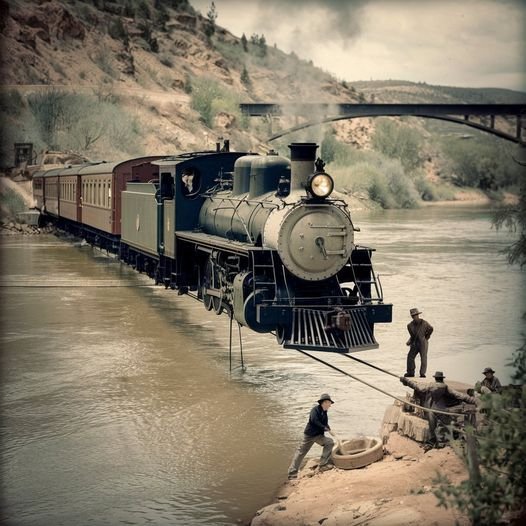In 1915, a remarkable feat of engineering took place as a steam locomotive was transported across the Rio Grande River via a cable in New Mexico. The image of such a heavy machine suspended above the rushing waters of the river speaks to the ingenuity and determination of the time. Railroads were essential for expanding American infrastructure, enabling the rapid movement of goods, people, and resources across vast distances. However, the rugged terrain of the American West, with its deep canyons and rivers, posed significant challenges for builders and engineers.
The Rio Grande, one of the major rivers in the southwestern United States, served as a natural barrier that had to be crossed to continue the expansion of the rail network. At this time, bridges were often difficult and time-consuming to construct in remote areas, and creative solutions were needed to transport locomotives and other heavy machinery. Using a large cable system, workers managed to lift and move the locomotive across the river, demonstrating a level of technical skill that was impressive for the era.
The locomotive itself, a symbol of progress and industrial power, represented the modernization of the American West. Steam engines had become the lifeblood of transportation, connecting remote areas and fueling economic growth. Crossing the Rio Grande via cable was a temporary but ingenious solution, showing how far railroad companies were willing to go to conquer the vast landscapes of the region.
This scene also underscores the immense labor involved in railroad construction during the early 20th century. Teams of engineers, surveyors, and laborers worked in challenging conditions to push the boundaries of what was possible. The sight of the steam locomotive suspended in midair, crossing a river in the heart of the New Mexican wilderness, captured the spirit of innovation that defined the era.
